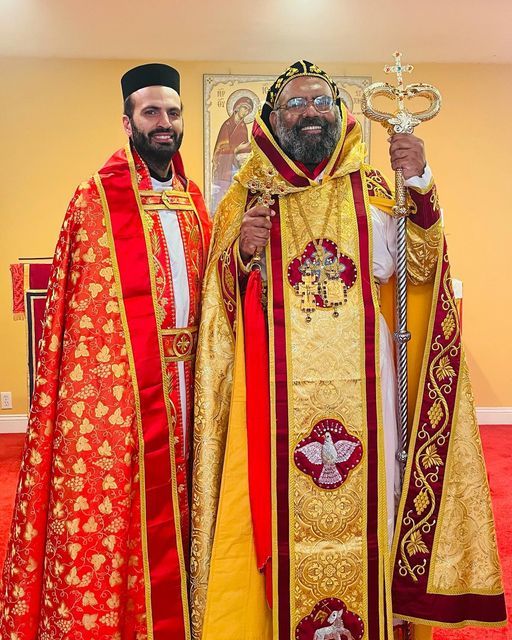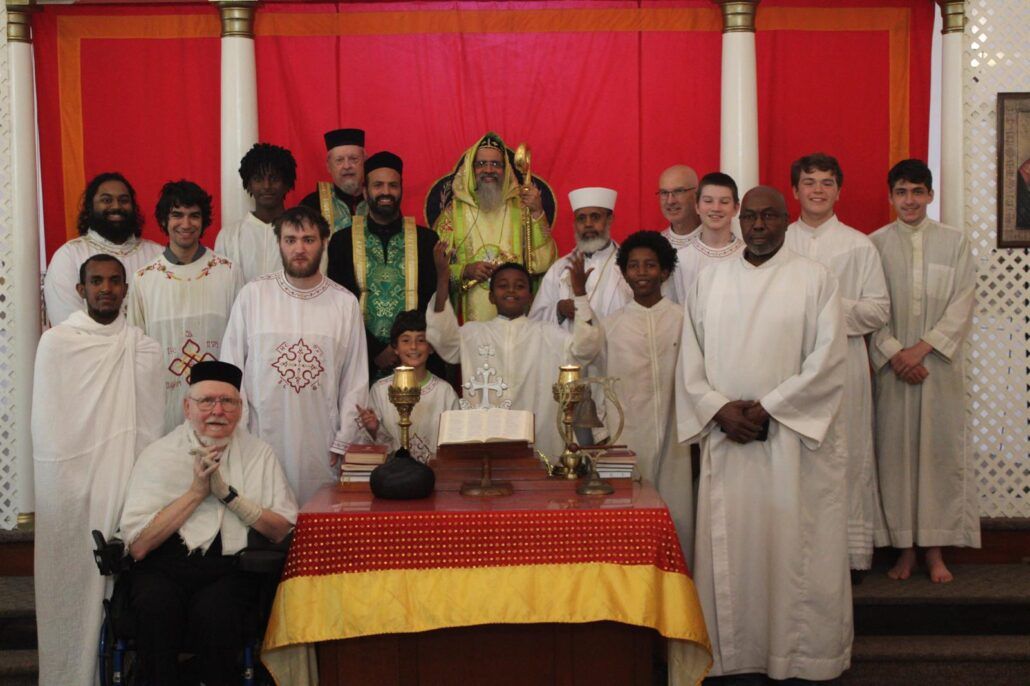Spokane Orthodox Church mirrors national trend of traditional pandemic response

News Story by Emma Maple | FāVS News
St. Gregorios Orthodox Church is a Spokane-based, Oriental Orthodox church the Rev. George Hatcher describes as being “very family style.”
These two traits — its Oriental roots and family-like character — heavily played into how the church dealt with the COVID-19 pandemic during its three-year existence, Hatcher said.
But there was another key factor of St. Gregorios’s response — its Orthodox Christian tradition.
A recent report, “How American Orthodox Christian Churches Dealt with and Recovered from the Pandemic,” found that United States Orthodox Christian churches had a unique approach to COVID-19 when compared to other traditions. This resulted in positive and negative outcomes.
St. Gregarious Orthodox, a potential microcosm to the national world of Orthodox Christianity, reflected many of the report’s findings in its pandemic response.
Key findings
Overall, the report noted that Orthodox Christian churches tended to stick to their ways, often remaining an unchanging bulwark in the midst of drastic national and international changes.
One way this manifested itself is in the churches’ reticence to close. While nationwide, about 12% of U.S. religious congregations remained open throughout the entire pandemic, about 44% of Orthodox parishes were open the whole time, despite pandemic restrictions that might have been levied by various states.
Washington state regulations varied throughout the pandemic and ranged from banning in-person gatherings to implementing crowd size restrictions. There were also requirements to wear masks and bans on singing, at various points.
Yet St. Gregorios never entirely closed in-person events during the pandemic, although it did hold services with only a “skeleton crew” in the beginning, according to Hatcher.
That only lasted a few months, before the parish went back to its typical practices, with optional protection measures in place, Hatcher said.
Reluctance to use virtual worship
Along with remaining open, the report highlighted that Orthodox parishes were less likely to offer alternative methods of joining service, such as online streaming.

By spring 2023, slightly over half of Orthodox parishes offered remote options for worship, compared to three quarters of all congregations, the report found.
“Orthodox parishes have been, and continue to be, intentionally reluctant to use virtual worship,” the report reads.
Even if the churches did offer online options, many rolled back those options once COVID’s virality lessened.
St. Gregorios seemed no different. While the church did offer streaming and online recordings of their liturgies, that option didn’t last longer than about a year, Hatcher said.
“[Being online] is temptation-distraction land,” Hatcher said. “It truly wasn’t effective ministry.”
The report also found Orthodox churches were less likely to publicly encourage members to get vaccinated or invite medical professionals to address their congregations.
Hatcher said St. Gregorios didn’t take any official stances on COVID-related topics such as masking, social distance or the top one — vaccines.
“That’s the job of the medical establishment, to say medical things,” he said. “That’s not the business of the church.”
The role of culture
Culture was a key component in responding to the pandemic, the report found, and the Orthodox churches’ tendency to adhere to traditional practices and resist change likely influenced their pandemic responses.
Additionally, Orthodox churches tend to be “embodied” — they emphasize physical presence and the engaging of all senses, according to the report.
“The Divine Liturgy requires a physical presence,” Hatcher said. “We believe in the word who became flesh, not the word who called us up one day, you know, on text.”
Orthodox churches pray together “in complex, multisensory services,” the report said, and use “many physical interactions” such as receiving Holy Communion from a shared spoon. After service, they often have “animated multigenerational gatherings.”
Hatcher said, although the St. Gregorios encouraged precautions such as hand sanitizers, masks and social distancing, it continued its embodied practices such as the shared communion.
“We’ll draw the line when the government says no singing … no Holy Communion, touch-free sacraments,” Hatcher said. “We don’t believe anyone will get sick from the Holy Eucharist. … If it’s really the body and blood of Christ, you can’t get sick from that,” unless it is due to an individual’s “own sinfulness or pride.”
Still hosting agape feasts
After worship, it is St. Gregorios’ tradition to have an “agape feast” with food, drink and conversation.
In the beginning of the pandemic, St. Gregorios limited the feast’s participants to newcomers and inquirers “because they needed that,” Hatcher said.
About two months in, however, the agape feasts were opened again for everyone.
“You cannot force a family to not eat dinner together, and it doesn’t matter if that family has four people or 24 people, we find a way to make sure that the family is still eating its food,” Hatcher said.
Hatcher noted a third culture aspect that influenced St. Gregorios’s response to the pandemic — its Oriental influences.
“Governments are famous for overstepping their boundaries.” Hatcher said. “There are certain kinds of things we believe can’t be asked of us.”
For Hatcher, those “things” often include governmental restrictions on the parishioner’s ability to practice their faith.
The outcomes
The Orthodox tradition’s unique approach to the pandemic yielded what lead study author Alexei Krindatch called a “‘mixed bag’ of results.”
One positive outcome was that Orthodox churches were more successful at gaining new members when compared to other traditions. By spring 2023, 15% of the members of the typical Orthodox parish were new, compared to only 10% at other congregations.

Additionally, in-person attendance saw a quicker rebound in Orthodox parishes, which had fully recovered to pre-pandemic levels by spring of 2023, the study found.
Although St. Gregorios had some complicating factors — the birth of another church before and during the beginning of COVID — Hatcher said the parish seemed to grow throughout and after COVID. He attributed this to people’s desire for a spiritual life “because it’s literally something you can depend on, more than a very insecure physical life.”
Less participants in church activities
While in-person attendance was up, however, Orthodox churches saw a decline in the number of regular participants (people who participate at least once a month in any congregational activity) compared to pre-pandemic levels.
Other congregations experienced the opposite outcome — a full return of regular participants compared to pre-pandemic levels, although a drop in in-person attendance.
The study suggested that Orthodox churches seemed to keep their more involved participants, while the more “marginally involved” individuals dropped out of interaction with the parishes.
St. Gregorios seemed to experience that exact phenomenon.
“Overall, everybody [who used to attend St. Gregorios] came back,” Hatcher said. “The people who didn’t necessarily come back were people who are maybe already kind of not the most spiritually active.”
Other than fluctuations in attendance, and perhaps in part due to their desire to stay open, Orthodox churches experienced higher COVID death rates.
A different report by author Alexei Krindatch found that the rates of death from COVID were nearly three times higher among members of American Orthodox churches than among the general U.S. population.
Krindatch noted that this finding might have been different if rates of death had been compared to other American church death rates, rather than among the general U.S. population.
“Generally, church members are older people,” he said, which likely partially accounted for those statistics.
Whatever the reason, this finding did not hold true for St. Gregorios.
“We did not lose a single person from COVID,” Hatcher said.
This report left Krindatch with an open-ended question that could be examined in future reports.
“My question is, will those parishes which sort of spiked in vitality during and post-pandemic define the future of Orthodox churches?” he said. “Or will they somehow settle back to what was pre-pandemic?”







